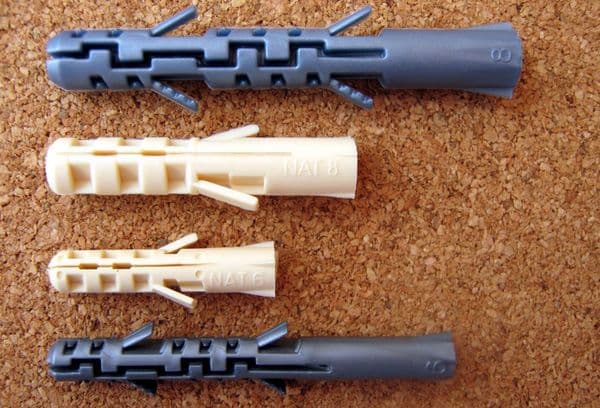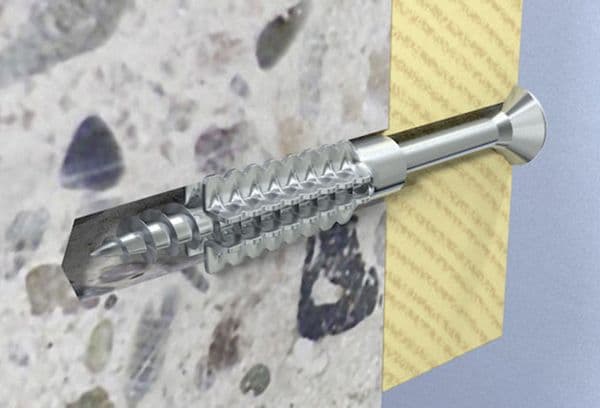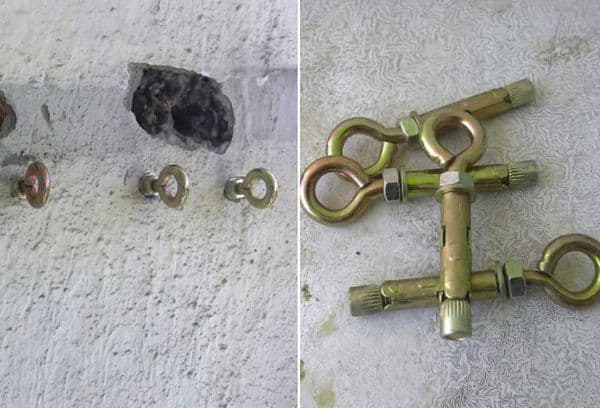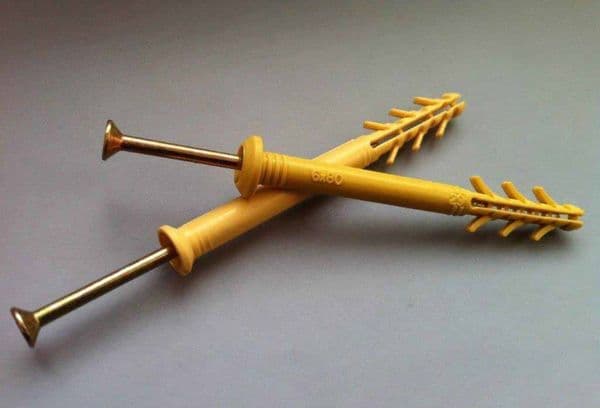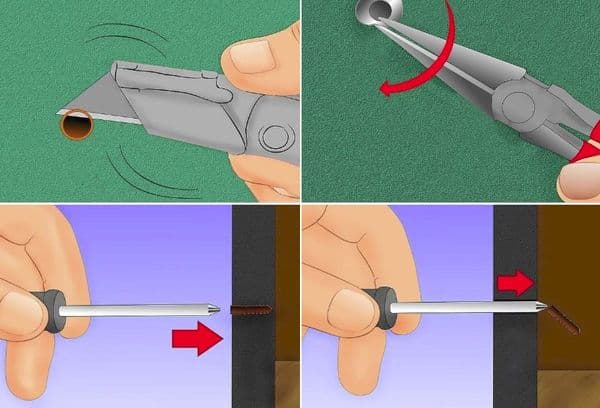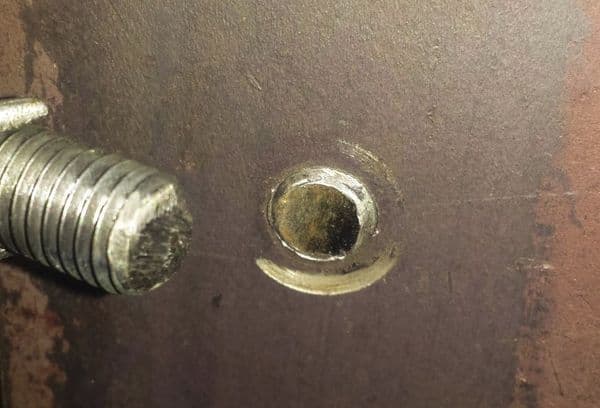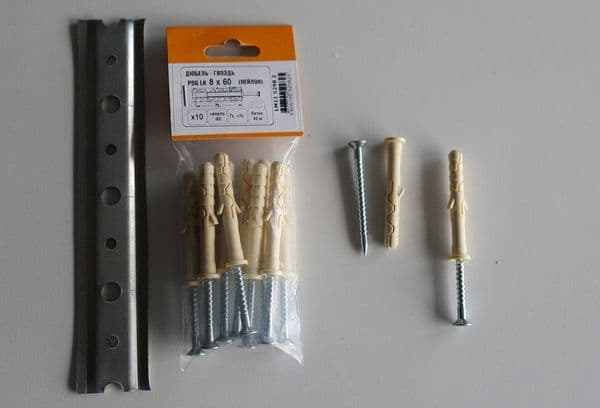Old dowel and jammed anchor: how and what to pull out
Content:
Dowels and anchors are used both on dense, such as concrete, and on loose (like aerated concrete) surfaces. Their main task is to increase the reliability of fastening the studs, bolts, self-tapping screws, etc. To extract them easily, it is enough to know a few secrets.
Plastic dowels
The most popular dowels today are plastic, nylon or other soft elastic material. They are available with different profiles, different depths of "spikes", the best options have a "mustache" that fix the sleeve in the wall.
Such dowels are simply removed with a strong corkscrew:
- Unscrew the screw or screw that was mounted in the dowel.
- Turn the corkscrew clockwise, allowing the tip at the end to securely enter the plastic dowel.
- Continuing to turn, pull towards you (sometimes you have to swing the tool and the dowel additionally).
- The sleeve will exit the wall without breaking it.
Plastic for aerated concrete
For this whimsical and fragile material, ordinary dowels are categorically not suitable - we need those that have a larger contact area. Usually this is achieved due to the "blades" that go in a spiral along the sleeve. To dismantle the expansion bolt shield of type Fischer for aerated concrete, you need the same as usual: twist, pull and gently loosen.
Metal
A metal dowel is also called an anchor or anchor dowel. The difference is not so great: both fasteners have a sleeve / sleeve made of metal and having 3 “petals” that open and act as an anchor in the wall. The bursting element is either a regular screw or a special one, with a cast or removable cone - these are the most common options.
The difference is mainly that the dowel clings to the entire length, has spikes, mustaches, etc. along the entire length of the sleeve, and an anchor is usually called a smooth sleeve with an open end.
How to remove the simplest expansion plug:
- Drive out or remove a bolt or screw.
- Hook the edge with pliers, pliers, etc.
- Rest the tool against the wall, and if the coating is fragile, for example, tile, into the stand (usually the craftsmen take a hammer).
- Swinging, stretch.
Molly
Molly metal dowels are compressed with a screw or special pliers so that the middle is flattened and laid out in the form of petals. This allows you to distribute the load as much as possible and increase the strength of fasteners on hollow walls (for example, on hollow brick, on drywalls made of drywall), but this also makes dismantling impossible. When the screw is released and pushed, the “petals” do not straighten completely and are torn in half.
Remove dowel for building gun
If you look at the fastening of the Soviet era, then almost certainly there were used dowels resembling a nail with a washer welded to them. They are installed today, with a construction gun, but only in those places where they are not supposed to be dismantled. Neither a door, nor a window, nor a battery or plumbing equipment should be equipped with such: today all these elements of the environment are considered replaceable.
Nevertheless. How to remove such a dowel? Three approaches are used:
- Hit the head 2–4 times with medium strength (this will push the dowel in place and it will lose tenacity), then grab the head and swing it, pull it out.
- Preheat the fixture with a burner and allow it to cool (it will expand and expand the concrete, then return to its previous dimensions) and pull it out.
- Enter with drill 6 as close to the dowel as possible, then squeeze a narrow tool ("crowbar" or the like) under the cap and knock the pin into the adjacent slot.
How to remove an anchor
It is usually not a screw or bolt that is inserted into the anchor, but a stud (the same bolt, only without a cap) or a hook. A bolt is screwed into the frame anchors, at the lower end of which a bursting element is held by means of a thread.
In general, the anchor is pulled out with pliers:
- Remove the nut.
- Hit the hairpin with a hammer and push it deep into the hole.
- Grab the sleeve with pliers and take it out.
Frame Anchor:
- Remove the bolt.
- With pliers or pliers, remove the anchor sleeve.
- Insert the bolt into the freed hole and turn clockwise to push the wedge onto the bolt.
- Take out both elements.
If the bolt is rusted
If you can’t remove the bolt because it has oxidized, you should try to reanimate it. To do this, the parts are well wetted with a rust converter, kerosene or WD-40. Leave for the time indicated on the package, or longer (up to half a day). During this time, the oxides must go. After cleaning the bolt, you need to try to remove the nut or unscrew the bolt.
Important
When untwisting a rusty structure, one must be extremely careful not to break the stud / screw.
If the bolt is broken or the slot is broken
If you tighten the bolt, screw or screw too quickly or with an improper screwdriver, it is easy to rip off the grooves for it. Less often, but it happens that the head is torn off completely or partially - in particular, in case of an unsuccessful attempt to pull out the frame anchor without removing the conical "anchor".
To remove a broken self-tapping screw or bolt, drill it and drive a chop into it (extractor: wedge-shaped screw with left-hand thread), fixed in a drill, screwdriver or pliers. Then the whole structure rotates counterclockwise.
Important
Never attempt to drill dowels for a construction gun. They are made of especially durable and hardened steel - you will break the drill and run the risk of being injured by fragments. Try to knock such a dowel or heat it.
If the sleeve is not installed correctly
The most common problem with anchor dowels is that it is impossible to hook them over the edge with either pliers or even narrow-nose pliers. To avoid this, it is enough to correctly install the anchor: leaving at least 2 mm above the level of the wall. This length is enough to pick up the sleeve, but it is easily closed with plaster or any profile.
What to do if it is impossible to hook the sleeve:
- Screw in a self-tapping screw between the sleeve and the hairpin and pull it out, possibly grabbing the hairpin as well.
- Remove or push the stud / bolt, drive a self-tapping screw or other tool between the wall and the sleeve, tearing and bending the corner of the anchor. After that, pull the resulting metal angle.
- Drill the top layer of the wall around the dowel to free the edge of the sleeve.
In extreme cases, the anchor is cut with a circular saw and its parts are taken out separately.
As a rule, metal dowels and anchors are installed where their dismantling is not required, and the load will be significant. In some cases, it makes sense not to pull out the sleeve, but to hammer it deeper and cover it with cement or other mortar or plastic / wood chock. In any case, there are no unsolvable problems: the dowel or anchor is almost always removed, it is worth making patience and effort.
Video: Types and purpose of dowels
